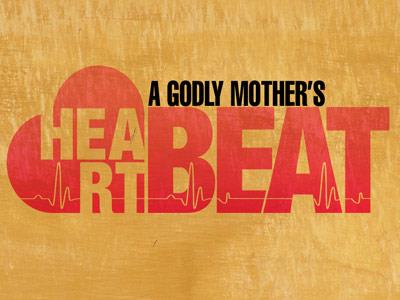-
Seeing With Our Eyes; Touching With Our Hands Series
Contributed by W Pat Cunningham on Dec 23, 2010 (message contributor)
Summary: John's sacramental vision was translated into a church building with two centers--a center of the Word and a center of Eucharistic celebration
Feast of St. John
Dec 27 2010
Spirit of the Liturgy
It is very appropriate to be preaching on the Spirit of the Liturgy on the Feast of St. John, because both the letters and the Gospel of John are so sacramental. One useful definition of sacrament is Christ touching us through sacred signs. Our life as Christians is very sensory. We communicate with others through sensory perception–hearing, sight, touch, scent, taste. The sacraments are designed to promote that kind of communication with God. So John begins his first letter by writing “That which was from the beginning, which we have heard, which we have seen with our eyes, which we have looked upon and touched with our hands, concerning the word of life.”
What Christ does here, in this place, daily, is to touch our hearts and minds with word and food. We hear, we see, we touch, we taste. And, on the altar, “what the Temple had in the past foreshadowed is now present in a new way. It enables us to become the contemporaries of the Sacrifice of the [Word of God].” As we face east, toward the rising sun who is the Son of God, the action of priest and people together with Christ “takes that community beyond itself into the communion of saints of all times and places. . .the altar is the place where heaven is opened up.” It’s as if the action of the Eucharistic prayer opens a door in that blank brown wall and offers us a communion with “the eternal liturgy” of heaven.
That is the second innovation of Christian worship. The first is, of course, the facing east toward the coming, rising Christ, which we discussed last week. This second involves this placement of an altar up on or toward the eastern wall. The altar “both looks toward the Oriens and forms part of it.” The altar becomes a new focal point. And, in fact, the Fathers tell us that the altar forms part of the triple office of Christ. Christ is the priest, the altar, and the sacrifice.
The third innovation of Christian worship is that, although the shrine of the Word remains from the synagogue, there is movement and replacement. The Torah shrine now becomes the shrine of the Gospel book. The Gospel does not abolish the Old Testament or push it to the side. The Gospel, not the rabbi, becomes the interpreter of the Old Testament. Everything in the Old points toward the New. Everything in Scripture, Old and New, centers on the reality of Jesus Christ, Son of God, become Son of Mary for our salvation. That may be the reason why we read in John’s Gospel that the seamless garment of Christ, perhaps woven by the hands of His mother, was not torn, but rather gambled for, even at the hour when the veil of the Temple was being torn down the middle. The Old Law gives way to the New Law of Christ, the Law of selfless, self-giving Love.
It would be wise for us to consider the traditional architecture of a Christian basilica, even more traditional than the ones we grew up in. Imagine a church building without pews or chairs. You either stood up or knelt or sat on the floor. In the center of the basilica’s nave is a shrine for the Sacred Books, and the bishop’s throne. During the Liturgy of the Word, we all stand around the center to hear the Word of God, acclaim the Word, and listen to the bishop expound and exhort. Then, “at the end of the Liturgy of the Word. . .everyone walks together with the bishop to the altar, and now the cry resounds, ‘Conversi ad Dominum’, Turn toward the Lord! In other words, look toward the east with the bishop. . .[look]. . .’to Jesus the pioneer and perfecter of our faith’. The Liturgy of the Eucharist is celebrated as we look up to Jesus. . .Thus, in early church buildings, the liturgy has two places” and we process toward the east as we move from the Liturgy of the Word to the celebration of the Eucharist.
The final word the Holy Father shares with us about the church structure is that “In Israel only the presence of men was deemed to be necessary for divine worship.” Women were permitted in the synagogue, but in a separate gallery. But with apostolic worship, we see both men and women gathered around the shrine of the Word and the altar of sacrifice. (They did stand in separate groups). Thus women were seen as sharing a common priesthood with men–although not a presbyteral priesthood. This goes along with the general empowerment and equality of women that we can see in the Church from the earliest days, especially in the Gospels of Luke and John.

 Sermon Central
Sermon Central



